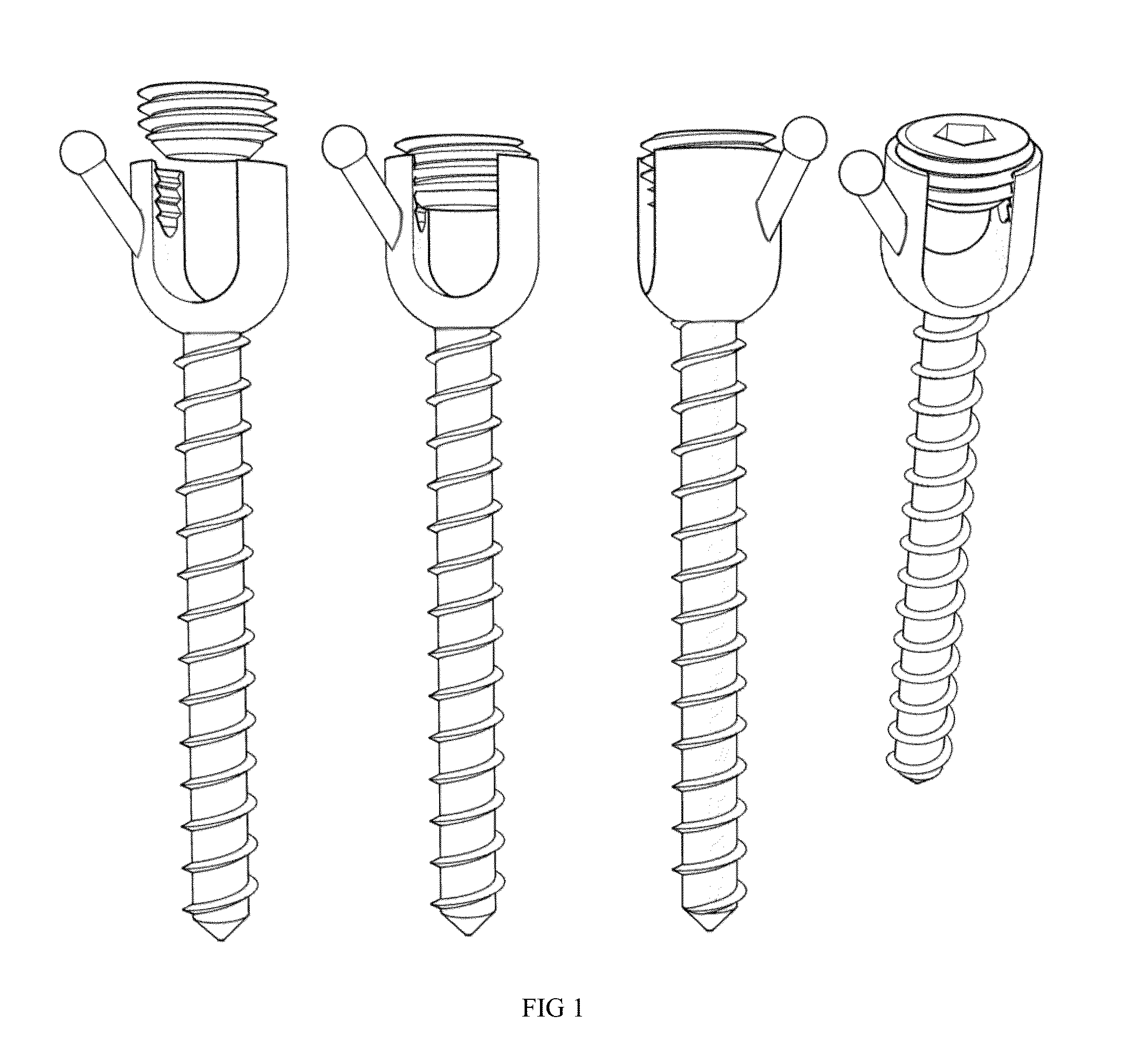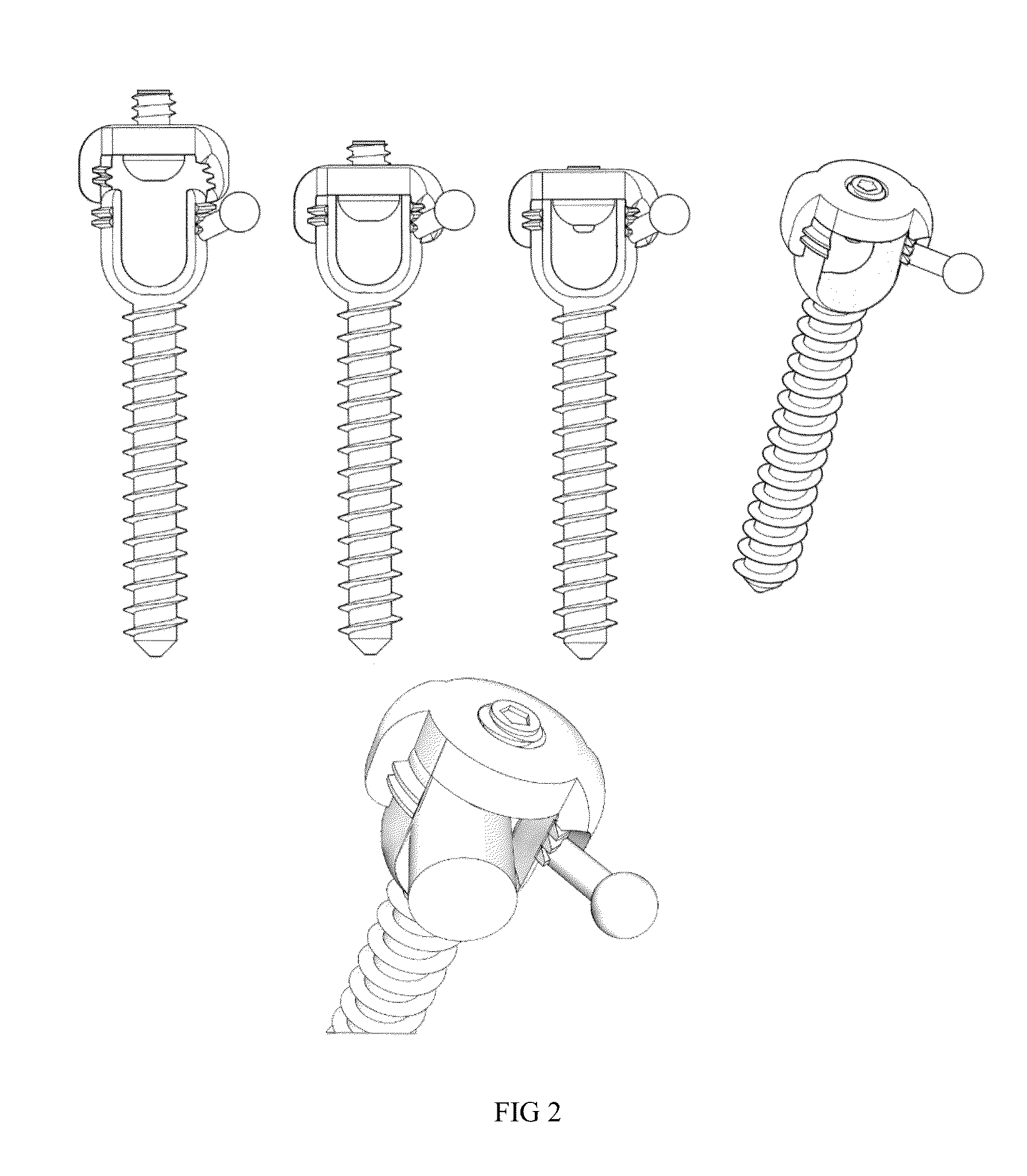Method and System for the Treatment of Spinal Deformities
a spinal deformity and spinal nerve technology, applied in the field of spinal nerve deformity treatment, can solve the problems of pain, inability to maintain the functional integrity of the neural elements contained within the spine, and three-dimensional deformity problems
- Summary
- Abstract
- Description
- Claims
- Application Information
AI Technical Summary
Benefits of technology
Problems solved by technology
Method used
Image
Examples
Embodiment Construction
[0065]Disclosed herein are requisite tools and methods for an accurate and preplanned three-dimensional correction of the vertebrae in a deformed spine of a patient. Also provided is a means for the definitive fixation of the spine.
[0066]Vertebral Fixing Elements
[0067]This invention provides vertebral fixing elements that are to be fixed to the vertebrae and hold firmly onto the bone. The vertebral fixing elements employed can be of any of the types commonly used in spine surgery such as pedicle screws, pedicle or laminar hooks, laminar or spinous process wires, cables, staples, loops or any other type of vertebral fixing element.
[0068]In one exemplary embodiment, normal pedicle screw type vertebral fixing elements are used to hold onto the vertebra because they provide for a solid fixation of the individual vertebra allowing for its adequate three dimensional space mobilization. The conjoined mobilization of two vertebral pedicle screw elements fixed onto the same vertebra with a p...
PUM
 Login to View More
Login to View More Abstract
Description
Claims
Application Information
 Login to View More
Login to View More - R&D
- Intellectual Property
- Life Sciences
- Materials
- Tech Scout
- Unparalleled Data Quality
- Higher Quality Content
- 60% Fewer Hallucinations
Browse by: Latest US Patents, China's latest patents, Technical Efficacy Thesaurus, Application Domain, Technology Topic, Popular Technical Reports.
© 2025 PatSnap. All rights reserved.Legal|Privacy policy|Modern Slavery Act Transparency Statement|Sitemap|About US| Contact US: help@patsnap.com



